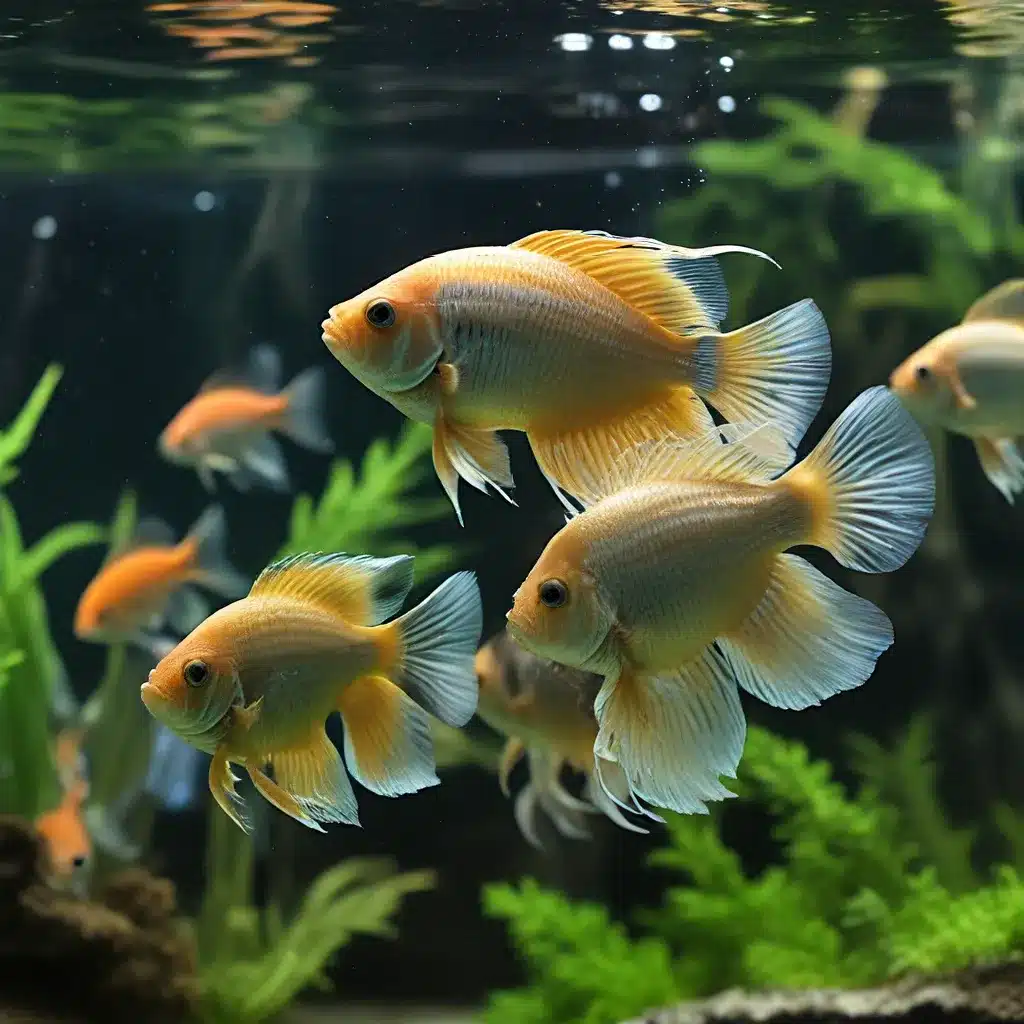
Mastering the Art of Segregation in Aquarium Fish Breeding
Responsible and thoughtful aquarium fish breeding is a crucial aspect of the hobby, ensuring the long-term health and diversity of our aquatic ecosystems. One of the key techniques that successful breeders employ is the practice of segregation. By carefully separating fish based on factors like age, size, and species, aquarists can create an environment that fosters optimal growth, reduces competition, and minimizes the risks of aggression or hybridization.
In the world of aquarium fish breeding, segregation is akin to a maestro’s baton, orchestrating the harmonious development of your aquatic inhabitants. Whether you’re working with King Aquarium’s renowned catfish species or nurturing a thriving colony of colorful cichlids, this strategic approach can make all the difference in your breeding endeavors.
By meticulously separating fish into distinct groups, you can tailor their feeding, water parameters, and overall care to suit their unique needs. This not only ensures the health and well-being of your breeding stock but also increases the chances of successful fry production and survival. Additionally, segregation helps to minimize the risk of aggressive behavior, as dominant individuals are unable to terrorize their more vulnerable tankmates.
One of the key benefits of segregation is its ability to promote optimal growth and development. When fish are housed together regardless of size or age, the larger, more aggressive individuals often outcompete the smaller, younger ones for resources like food and territories. This can lead to stunted growth, poor body condition, and even the untimely demise of the subordinate fish. By separating the population into distinct groups, you can ensure that each individual has access to the appropriate level of care and nutrition, allowing them to thrive.
Moreover, segregation plays a crucial role in maintaining the genetic diversity of your aquarium fish. When different species or color morphs are allowed to intermingle, the risk of hybridization increases, potentially diluting the unique traits that make each variety so captivating. By housing your fish in separate tanks or designated breeding areas, you can prevent unwanted crossbreeding and preserve the purity of your breeding lines.
The Joys of Backyard Breeding: From African Lovebirds to Aquarium Fish
While the concept of segregation may seem straightforward, the true joy of aquarium fish breeding lies in the multitude of species and the unique challenges they present. From the captivating territoriality of African lovebirds to the delicate spawning rituals of delicate tropical fish, each aquatic inhabitant requires a tailored approach to ensure their breeding success.
One particularly rewarding aspect of backyard breeding is the opportunity to witness the natural behaviors and life cycles of your aquatic companions. Observing the courtship displays, nest-building, and parental care of fish like goldfish, tilapia, or hito can be a truly mesmerizing experience, sparking a deeper appreciation for the intricate workings of these underwater ecosystems.
As you delve into the world of aquarium fish breeding, you’ll quickly discover that each species presents its own unique set of challenges and considerations. Some fish may require specific water parameters, while others may thrive in heavily planted or dimly lit environments. By understanding the nuanced needs of your breeding stock, you can create an optimal environment that maximizes their chances of spawning and raising healthy fry.
Unlocking the Secrets of Successful Tropical Fish Breeding
One of the key factors in successful tropical fish breeding is water management. Maintaining precise control over water parameters like pH, temperature, and dissolved oxygen levels is crucial for triggering the natural breeding behaviors of your aquatic inhabitants. Additionally, regular water changes and the use of appropriate filtration systems can help ensure the water quality remains pristine, supporting the delicate life stages of your fry.
Another essential element in tropical fish breeding is the aquascape. The layout and design of your aquarium can greatly influence the breeding behaviors and success of your fish. Providing ample hiding spots, spawning substrates, and vegetation can create a sense of security and comfort for your breeding pairs, encouraging them to engage in their natural courtship rituals.
Expert breeders often experiment with different aquascaping techniques, such as the use of floating plants, hardscapes, or specialized breeding traps, to optimize the breeding environment. By tailoring the visual and physical aspects of the aquarium, you can cater to the unique needs of your fish and increase the likelihood of successful spawning and fry survival.
Breeding Insights from Dexters World: Catfish Farming and Beyond
As we delve deeper into the world of aquarium fish breeding, it’s important to acknowledge the valuable insights and experiences shared by industry leaders like Dexters World. Their passion for aquaculture and dedication to refining their practices offer a wealth of knowledge that can greatly benefit aspiring aquarium fish breeders.
One of the key lessons from Dexters World is the mastery of catfish farming, a particularly challenging yet rewarding endeavor. By implementing strategic segregation techniques, carefully managing water parameters, and optimizing their aquascaping, the team at Dexters World has achieved remarkable success in breeding and rearing various catfish species.
As you embark on your own aquarium fish breeding journey, consider the insights and best practices shared by industry leaders like Dexters World. Their expertise in areas such as shrimp and snail breeding can provide invaluable guidance as you navigate the complexities of aquarium husbandry and optimization.
Remember, the path to successful aquarium fish breeding is paved with dedication, patience, and a deep understanding of your aquatic inhabitants. By embracing the principles of segregation, water management, and strategic aquascaping, you can unlock the secrets to cultivating thriving, diverse populations in your own backyard or home aquarium.

